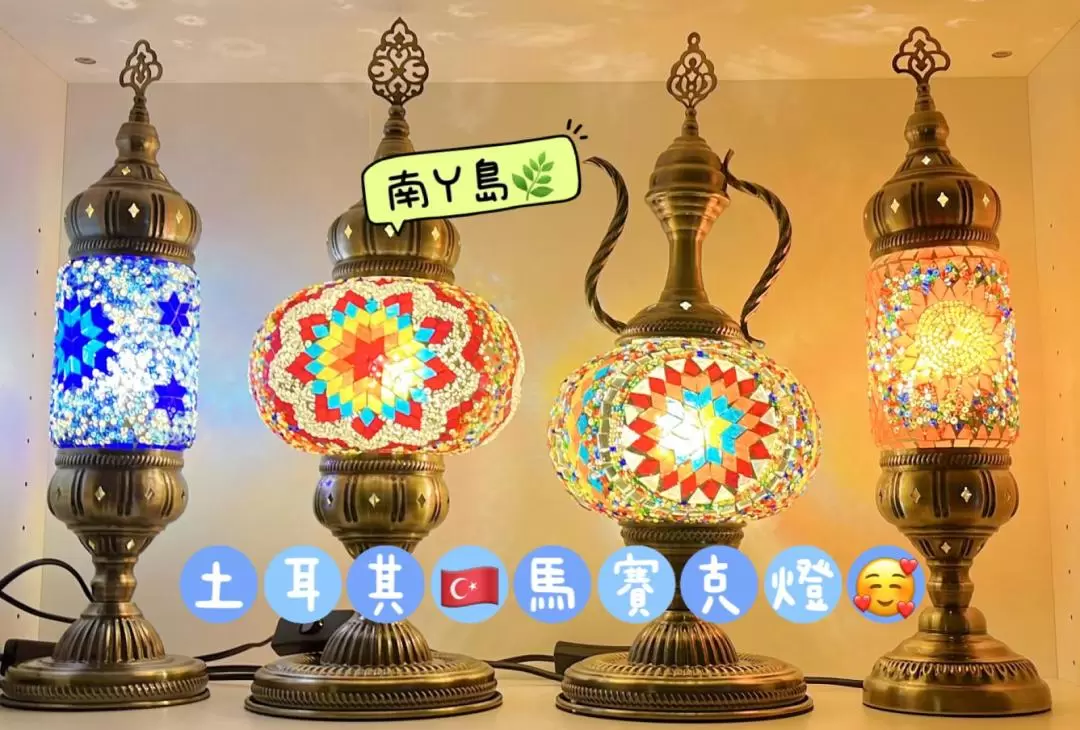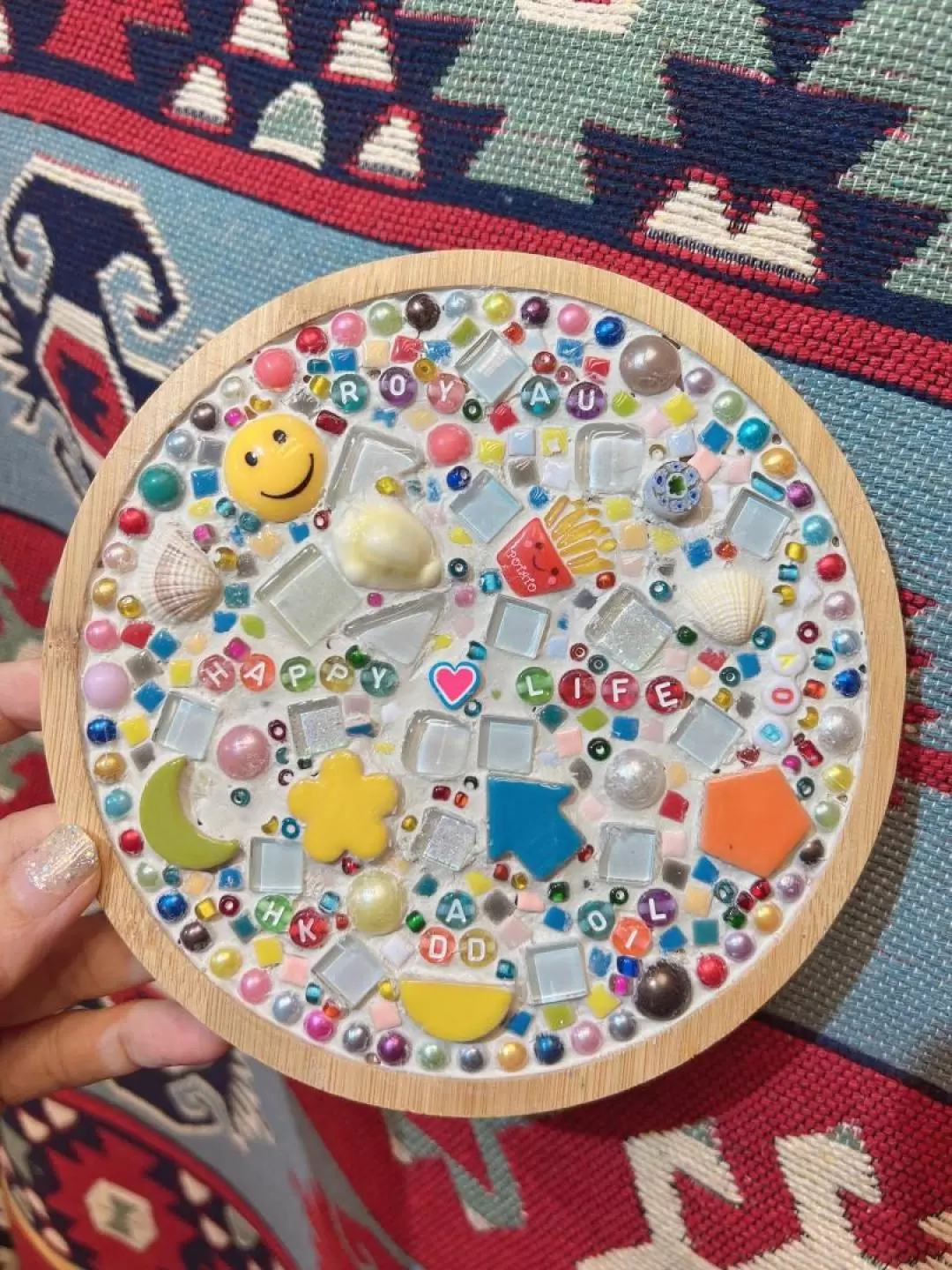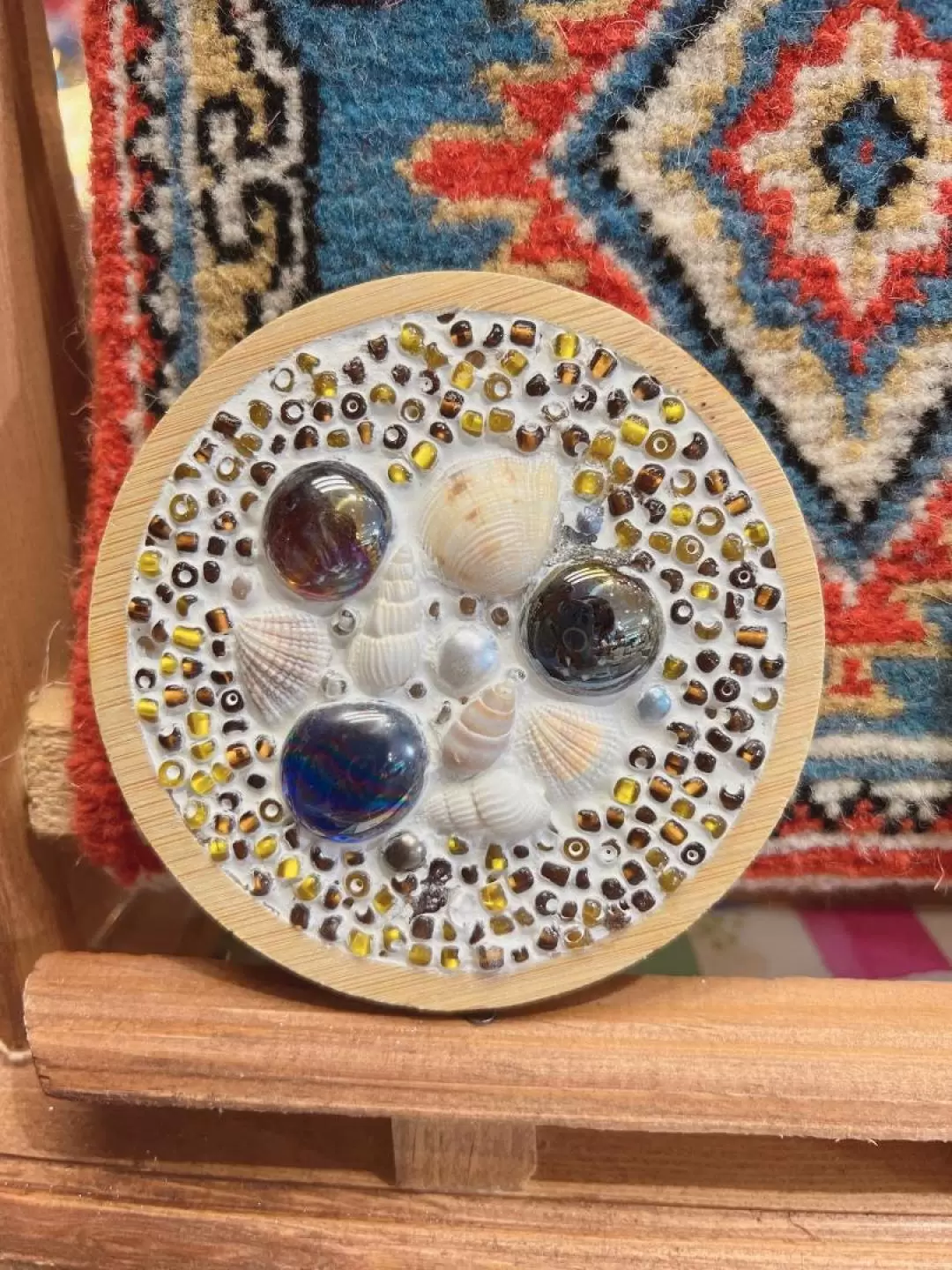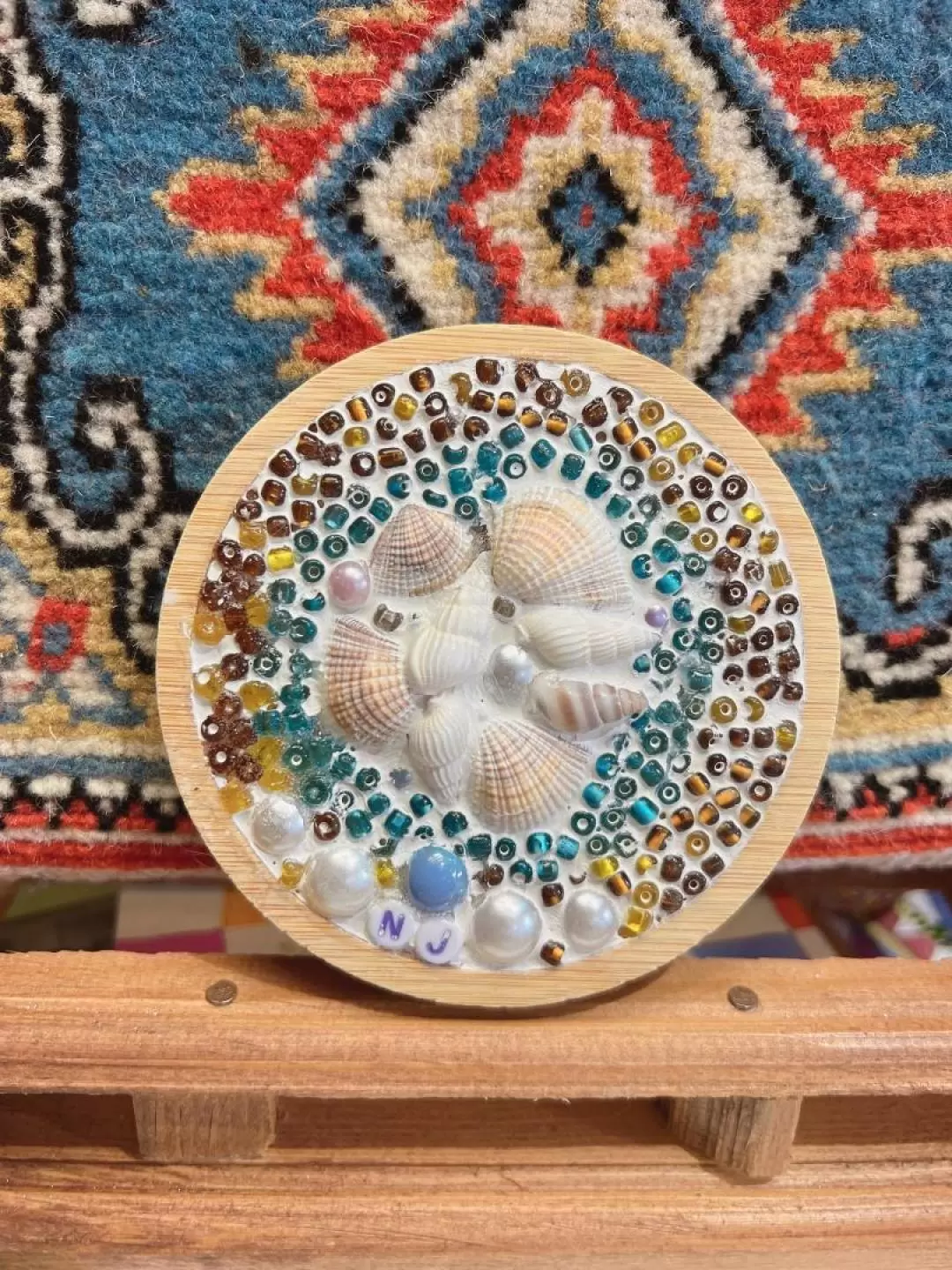"Experience the Exotic Mosaic Workshop in Irregulart - Create Stunning Coasters, Photo Frames, Candlesticks, Table Lamps, and Moon Lamps in Lamma Island, Tsim Sha Tsui, and Kowloon City"
#exotic mosaic workshop# coasters# photo frames# candlesticks# table lamps# moon lamps# Lamma Island# Tsim Sha Tsui
5(9 ratings)
US$35US$43
Experience the vibrant artistry of mosaic craftsmanship at a unique workshop nestled in the heart of Hong Kong. Delve into the world of exotic mosaics as you create stunning coasters, photo frames, candlesticks, table lamps, and moon lamps, all inspired by the eclectic surroundings of Lamma Island, Tsim Sha Tsui, and Kowloon City.
Immerse yourself in the art of mosaic-making at this one-of-a-kind workshop that offers a hands-on experience unlike any other. Discover the intricate beauty of mosaic art as you learn the techniques behind crafting exquisite pieces that capture the essence of the exotic landscapes that surround you.
Lamma Island, with its picturesque scenery and laid-back atmosphere, provides the perfect backdrop for your creative journey. Let the island's natural beauty inspire your designs as you work on creating unique coasters, each piece a reflection of the island's charm and character.
Venture into Tsim Sha Tsui, a bustling district known for its vibrant energy and diverse culture. Here, you'll find inspiration at every turn as you craft intricate photo frames that encapsulate the spirit of this dynamic city. Let the sights and sounds of Tsim Sha Tsui ignite your creativity as you bring your vision to life through mosaic art.
Explore the hidden gems of Kowloon City, a neighborhood steeped in history and tradition. As you delve into the art of candlestick making, allow the rich heritage of Kowloon City to guide your designs, infusing each piece with the essence of this storied locale. Create candlesticks that not only illuminate a room but also tell a story of the city's past and present.
Craft unique table lamps that illuminate your space with a warm and inviting glow, inspired by the moonlit nights of Lamma Island. Let the tranquility of the island's evenings guide your designs as you create lamps that capture the magic of the moonlight, casting a soft and enchanting light in any room.
Embrace the art of mosaic-making at this workshop that celebrates creativity, craftsmanship, and the beauty of exotic locales. Whether you're a seasoned artist or a novice enthusiast, this experience offers a unique opportunity to explore your creativity and bring home one-of-a-kind pieces that serve as lasting mementos of your time in Hong Kong. Join us on this artistic journey and discover the joy of creating beautiful mosaic art inspired by the wonders of Lamma Island, Tsim Sha Tsui, and Kowloon City.
Immerse yourself in the art of mosaic-making at this one-of-a-kind workshop that offers a hands-on experience unlike any other. Discover the intricate beauty of mosaic art as you learn the techniques behind crafting exquisite pieces that capture the essence of the exotic landscapes that surround you.
Lamma Island, with its picturesque scenery and laid-back atmosphere, provides the perfect backdrop for your creative journey. Let the island's natural beauty inspire your designs as you work on creating unique coasters, each piece a reflection of the island's charm and character.
Venture into Tsim Sha Tsui, a bustling district known for its vibrant energy and diverse culture. Here, you'll find inspiration at every turn as you craft intricate photo frames that encapsulate the spirit of this dynamic city. Let the sights and sounds of Tsim Sha Tsui ignite your creativity as you bring your vision to life through mosaic art.
Explore the hidden gems of Kowloon City, a neighborhood steeped in history and tradition. As you delve into the art of candlestick making, allow the rich heritage of Kowloon City to guide your designs, infusing each piece with the essence of this storied locale. Create candlesticks that not only illuminate a room but also tell a story of the city's past and present.
Craft unique table lamps that illuminate your space with a warm and inviting glow, inspired by the moonlit nights of Lamma Island. Let the tranquility of the island's evenings guide your designs as you create lamps that capture the magic of the moonlight, casting a soft and enchanting light in any room.
Embrace the art of mosaic-making at this workshop that celebrates creativity, craftsmanship, and the beauty of exotic locales. Whether you're a seasoned artist or a novice enthusiast, this experience offers a unique opportunity to explore your creativity and bring home one-of-a-kind pieces that serve as lasting mementos of your time in Hong Kong. Join us on this artistic journey and discover the joy of creating beautiful mosaic art inspired by the wonders of Lamma Island, Tsim Sha Tsui, and Kowloon City.
Workshop address
Workshop time:



